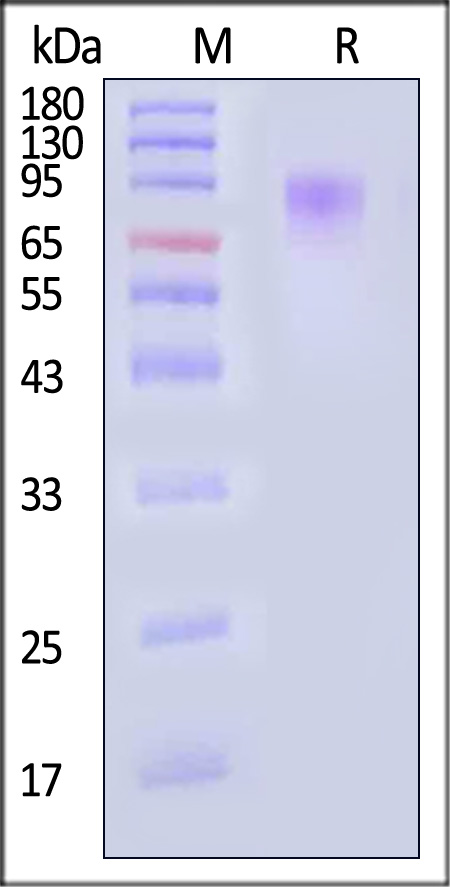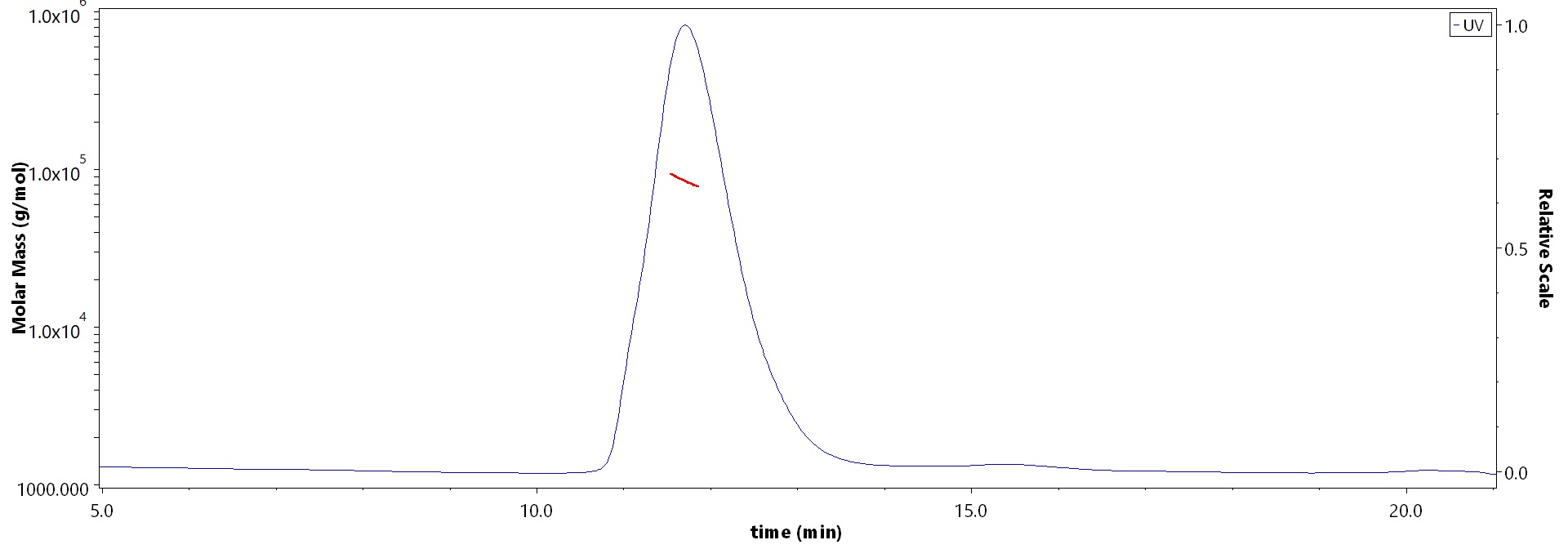RUNX1-MUC13 Interaction Activates Wnt/β-Catenin Signaling Implications for Colorectal Cancer MetastasisChen, Tu, Yang
et alInt J Biol Sci (2024) 20 (12), 4999-5026
Abstract: Background: Colorectal cancer (CRC) remains a significant global health challenge, often characterized by late-stage metastasis and poor prognosis. The Runt-related transcription factor 1 (RUNX1) plays a dual role as both an oncogene and a tumor suppressor in various cancers, including CRC. However, the specific regulatory mechanisms of RUNX1 in CRC, particularly its direct roles, are not fully understood. Objective: This study aimed to investigate the role of RUNX1 in CRC progression and its interaction with Mucin 13 (MUC13) as a potential regulatory target. Methods: RUNX1 expression was analyzed in CRC tissues and cell lines compared to controls. In vitro and in vivo assays were conducted to assess the effects of RUNX1 overexpression and knockdown on cell behavior. ChIP-seq and RNA-seq analyses were performed to identify RUNX1 targets, with a focus on MUC13. Results: RUNX1 expression was significantly upregulated in CRC tissues and cells, correlating with advanced pathological characteristics and poor patient outcomes. RUNX1 overexpression enhanced CRC cell proliferation, migration, invasion, and G2/M phase arrest, while its knockdown had the opposite effects. MUC13 was identified as a direct transcriptional target of RUNX1, with its expression contributing to the activation of the Wnt/β-catenin signaling pathway. Disruption of MUC13 partially reversed the malignant phenotypes induced by RUNX1. Conclusion: RUNX1 promotes CRC progression by upregulating MUC13 and activating the Wnt/β-catenin pathway. This RUNX1-MUC13 axis represents a potential therapeutic target for managing CRC.© The author(s).
Porcine ex-vivo intestinal mucus has age-dependent blocking activity against transmissible gastroenteritis virusSaleem, Carpentier, Hinnekens
et alVet Res (2024) 55 (1), 113
Abstract: Transmissible gastroenteritis virus (TGEV) causes high mortality in young piglets (< 3 days of age). With aging, the susceptibility/morbidity/mortality rates drop. We previously hypothesized that the age-related changes in the intestinal mucus could be responsible for this resistance. Hence, this study investigated the effect of porcine intestinal mucus from 3-day and 3-week-old pigs on the free mobility of the virulent TGEV Miller strain, and on the infection in swine testicle (ST) cells. Single particle tracking (SPT) revealed that TGEV had significantly higher diffusion coefficients in 3-day mucus compared to 3-week mucus. TGEV and charged and uncharged control nanoparticles diffused freely in 3-day mucus but were hindered by 3-week mucus in the diffusion model; TGEV mimicked the diffusion behavior of negatively charged carboxylated particles. Inoculation of ST cells with TGEV in the presence of 3-week mucus resulted in a significantly lower average number of infected cells (30.9 ± 11.9/5 fields) compared with 3-day mucus (84.6 ± 16.4/5 fields). These results show that 3-week mucus has a significant TGEV-blocking activity compared to 3-day mucus in free diffusion and infection of the underlying susceptible cells. Additionally, a label-free proteomics analysis revealed an increased expression of mucin 13, known for negatively regulating the tight junctions in intestinal epithelium, in 3-day-old pigs. In 3-week-old pigs, a higher expression of mucin 2, a type of secreted mucin which is known for inhibiting coronavirus infection, was observed. Concludingly, this study demonstrated a protective effect of 3-week mucus against viral infections.© 2024. The Author(s).
Detection and Analysis of Antidiarrheal Genes and Immune Factors in Various Shanghai Pig BreedsZhou, Liu, He
et alBiomolecules (2024) 14 (5)
Abstract: The aim of this study was to identify effective genetic markers for the Antigen Processing Associated Transporter 1 (TAP1), α (1,2) Fucosyltransferase 1 (FUT1), Natural Resistance Associated Macrophage Protein 1 (NRAMP1), Mucin 4 (MUC4) and Mucin 13 (MUC13) diarrhea-resistance genes in the local pig breeds, namely Shanghai white pigs, Fengjing pigs, Shawutou pigs, Meishan pigs and Pudong white pigs, to provide a reference for the characterization of local pig breed resources in Shanghai. Polymerase chain reaction-restriction fragment length polymorphism (PCR-RFLR) and sequence sequencing were applied to analyze the polymorphisms of the above genes and to explore the effects on the immunity of Shanghai local pig breeds in conjunction with some immunity factors. The results showed that both TAP1 and MUC4 genes had antidiarrheal genotype GG in the five pig breeds, AG and GG genotypes of the FUT1 gene were detected in Pudong white pigs, AA antidiarrheal genes of the NRAMP1 gene were detected in Meishan pigs, the AB type of the NRAMP1 gene was detected in Pudong white pigs, and antidiarrheal genotype GG of the MUC13 gene was only detected in Shanghai white pigs. The MUC13 antidiarrhea genotype GG was only detected in Shanghai white pigs. The TAP1 gene was moderately polymorphic in Shanghai white pigs, Fengjing pigs, Shawutou pigs, Meishan pigs and Pudong white pigs, among which TAP1 in Shanghai white pigs and Shawutou pigs did not satisfy the Hardy-Weinberg equilibrium. The FUT1 gene of Pudong white pigs was in a state of low polymorphism. NRAMP1 of Meishan pigs and Pudong white pigs was in a state of moderate polymorphism, which did not satisfy the Hardy-Weinberg equilibrium. The MUC4 genes of Shanghai white pigs and Pudong white pigs were in a state of low polymorphism, and the MUC4 genes of Fengjing pigs and Shawutou pigs were in a state of moderate polymorphism, and the MUC4 genes of Fengjing pigs and Pudong white pigs did not satisfy the Hardy-Weinberg equilibrium. The MUC13 gene of Shanghai white pigs and Pudong white pigs was in a state of moderate polymorphism. Meishan pigs had higher levels of IL-2, IL-10, IgG and TNF-α, and Pudong white pigs had higher levels of IL-12 than the other pigs. The level of interleukin 12 (IL-12) was significantly higher in the AA genotype of the MUC13 gene of Shanghai white pigs than in the AG genotype. The indicator of tumor necrosis factor alpha (TNF-α) in the AA genotype of the TAP1 gene of Fengjing pigs was significantly higher than that of the GG and AG genotypes. The indicator of IL-12 in the AG genotype of the Shawutou pig TAP1 gene was significantly higher than that of the GG genotype. The level of TNF-α in the AA genotype of the NRAMP1 gene of Meishan pigs was markedly higher than that of the AB genotype. The IL-2 level of the AG type of the FUT1 gene was obviously higher than that of the GG type of Pudong white pigs, the IL-2 level of the AA type of the MUC4 gene was dramatically higher than that of the AG type, and the IgG level of the GG type of the MUC13 gene was apparently higher than that of the AG type. The results of this study are of great significance in guiding the antidiarrhea breeding and molecular selection of Shanghai white pigs, Fengjing pigs, Shawutou pigs, Meishan pigs and Pudong white pigs and laying the foundation for future antidiarrhea breeding of various local pig breeds in Shanghai.
Modeling of new markers for the diagnosis and prognosis of pancreatic cancer based on the transition from inflammation to cancerZhou, Huang, Zhang
et alTransl Cancer Res (2024) 13 (3), 1425-1442
Abstract: Pancreatic adenocarcinoma (PAAD) is a lethal disease with a poor prognosis. Genes involved in acute pancreatitis (AP) or chronic pancreatitis (CP) might be important for PAAD development. This study sought to identify potential PAAD diagnosis markers and to establish a PAAD prognosis prediction model based on AP- and CP-related genes.The significantly differentially expressed genes in both AP or CP and PAAD were obtained by a bioinformatics analysis. A risk-score model for predicting survival was constructed based on The Cancer Genome Atlas (TCGA) data and validated using an International Cancer Genome Consortium (ICGC) cohort. Protein expression and the effects of the genes in the risk models were validated by immunohistochemistry, or Cell Counting Kit-8 (CCK-8) and transwell assays. The study sample data included six AP tissue samples and five normal pancreatic tissue samples, six CP tissue samples and six normal pancreatic tissue samples from the Gene Expression Omnibus (GEO) expression profiling microarrays GSE109227 and GSE41418 data sets, respectively, and fragments per kilobase per million mapped fragments (FPKM) data from four normal controls and 150 PAAD cases from TCGA database, and 182 cancer patient samples with complete survival prognostic data from the ICGC database.In total, 508 significantly differentially expressed genes were found in both AP or CP and PAAD. Trefoil factor 2 (TFF2), tubulointerstitial nephritis antigen (TINAG), trefoil factor 1 (TFF1), aquaporin 5 (AQP5), SAM pointed domain containing ETS transcription factor (SPDEF), anterior gradient protein 2 (AGR2), apolipoprotein B messenger RNA editing enzyme catalytic subunit 1 (APOBEC1), kallikrein-related peptidase 6 (KLK6), dopa decarboxylase (DDC), mucin 13 (MUC13), claudin 18 (CLDN18), annexin A10 (ANXA10), and tetraspanin 1 (TSPAN1) were found to be present in PAAD and had the largest fold change. A risk-score model, comprising 19 genes, was constructed for prognostic prediction. A high-risk score indicated a poor prognosis. TINAG, DDC, SPDEF, and APOBEC1 proteins were increased in PAAD, while TINAG and DDC were correlated with the pathologic grade. Decreased TINAG, APOBEC1, transmembrane protein 94 (TMEM94), and kelch like family member 36 (KLHL36) expression inhibited PAAD cell proliferation, while decreased SPDEF, TMEM94, and KLHL36 expression significantly inhibited PAAD cell migration.The AP and CP co-related genes were significantly correlated with PAAD. TINAG, DDC, SPDEF, and APOBEC1 could serve as new PAAD predictors. The risk model developed in this study could be used to predict the prognosis of PAAD patients.2024 Translational Cancer Research. All rights reserved.


























































 膜杰作
膜杰作 Star Staining
Star Staining

















